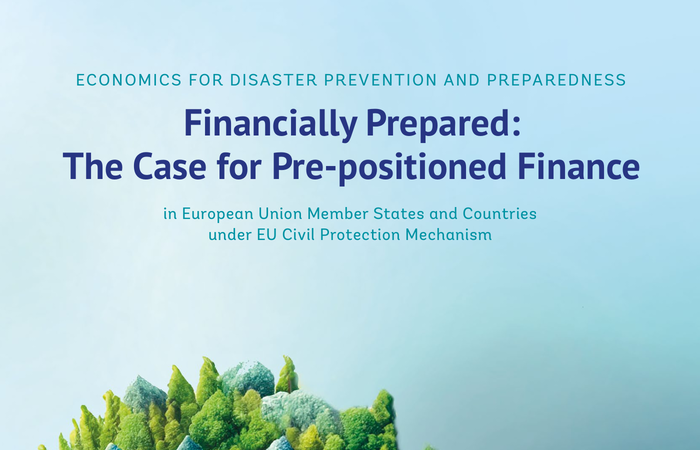Financially Prepared: The Case for Pre-positioned Finance – in European Union Member States and Countries under EU Civil Protection Mechanism – World

Executive Summary
This report was developed as part of the technical assistance program ‘Phase 2 – Economics of Prevention and Preparedness (EDPP) in European Union (EU) Member States (MS) and Countries under EU Civil Protection Mechanism’ (UCPM). The report has been prepared for the Directorate-General for European Civil Protection and Humanitarian Aid Operations (DG ECHO) and other European Commission (EC) stakeholders. It complements the Phase 1 report that focused on earthquake and flood risk and revealed that losses from these events at the EU level can cost €13–50 billion a year depending on the magnitude of the events. The EDPP Phase 2 considers wildfire and drought hazards and current financing mechanisms and recommends options on how to scale disaster risk financing (DRF) at the national and regional levels.
This report aims to inform discussions on the development of effective national and regional risk financing mechanisms by identifying funding gaps for wildfire and drought response. The identification of funding gaps can be used to inform a risk-layering approach, which combines different financial instruments to provide predictable finance when needed. This also includes the identification of additional regional funding to complement national finances.
Overall, this report reinforces the findings from Phase 1 which highlight that too much of the disaster and climate risk is managed through risk retention (for example, budgetary instruments at the EU and EU MS levels) and more should be done to incentivize transfer risk to the private sector at both the EU and the EU MS levels.
Disaster Risk in the European Union (EU) Member States (MS)
Drought and extreme heat have similar impacts on economies and often occur simultaneously. For example, declines in labor productivity and disruptions to the water-dependent industry such as water-intensive manufacturing, agriculture/forestry, food production, power generation, and water distribution. Extreme heat is additionally associated with added stress on emergency response and health sectors. Due to the relationships between droughts and extreme heat, their impacts are often difficult to separate in historical event reports (that is, extreme heat impacts may be considered part of overall drought impacts; GAR 2021). This report focuses on the financial impacts of drought using the losses reported by the Joint Research Centre (JRC) and discusses potential impacts from extreme heat where appropriate noting that little to no information is systematically collected on the impacts of extreme heat beyond excess hospital admissions and mortality numbers in a few countries (that is, Belgium and Italy).
The number of wildfires has been increasing year on year since 2019 and typically coincides with periods of drought and extreme heat. Damage caused by wildfires in Lithuania, Estonia, Austria, and Greece was particularly acute in 2023 compared to previous years exceeding the historic average damage costs by between 83 and 1,758 percent. In terms of actual costs, the 2023 wildfires estimates of direct damage were equivalent to €2 billion in Greece, €1 billion in Italy, and around €913 million in Spain.






